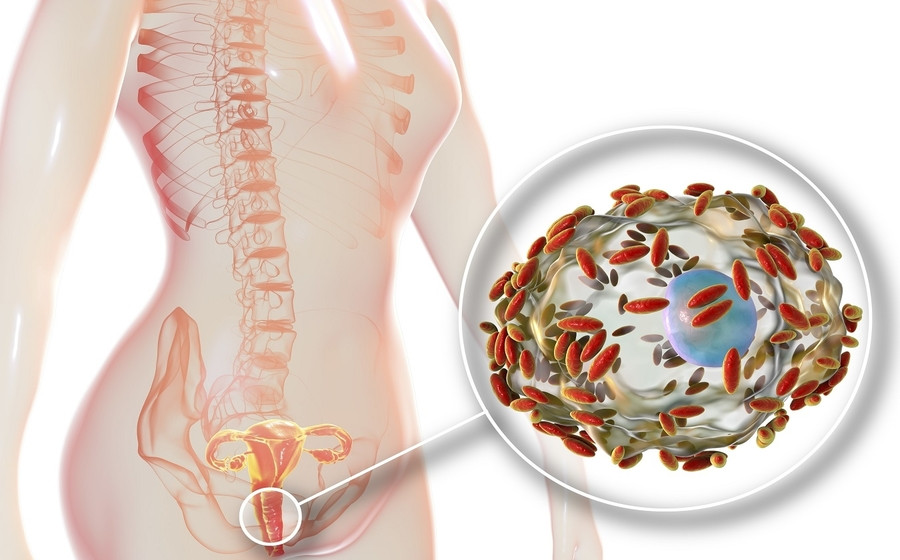Definisi
Bakteremia merupakan kondisi bakteri masuk ke aliran darah dan menyebabkan infeksi. Istilah lain dari bakteremia adalah keracunan pada darah, tetapi istilah ini bukan istilah medis. Pada beberapa kasus, bakteremia dapat bersifat asimptomatik atau tidak menunjukkan gejala. Pada beberapa kasus lainnya, gejala dapat muncul dan memiliki risiko dari potensi komplikasi serius.
Pada kondisi normal, pembuluh darah dialiri oleh darah dan sel imun yang berfungsi menjaga tubuh dari masuknya benda asing (patogen) seperti virus dan bakteri ke dalam tubuh. Sedangkan pada kondisi bakteremia, infeksi bakteri telah menyebar ke pembuluh darah dan dapat menunjukkan beberapa gejala. Jika kondisi bakteremia tidak ditangani dengan tepat maka bakteri dapat terus berkembang dan berpotensi menimbulkan infeksi yang parah.
Bakteremia berbeda dengan sepsis, bakteremia mengacu pada adanya bakteri di dalam aliran darah. Bakteri tersebut dapat masuk melalui beberapa hal seperti pada saat pembersihan gigi atau pada saat melakukan operasi kecil. Bila tidak segera ditangani, infeksi pada pembuluh darah tersebut dapat menyebabkan komplikasi dan salah satunya adalah sepsis. Bakteremia umumnya dimulai dari infeksi kecil dan lokal seperti luka pada kulit, infeksi saluran kencing atau tipe infeksi lain. Pada beberapa kasus, pasien tidak mengetahui dimana terjadinya infeksi pada tahap awal karena tidak muncul gejala atau tanda ketika infeksi tersebut terjadi pada satu lokasi.
Penyebab
Bakteremia disebabkan oleh bakteri yang masuk ke dalam aliran darah. Beberapa cara bakteri tersebut dapat masuk melalui prosedur :
- Prosedur gigi seperti pembersihan gigi rutin atau proses pencabutan gigi
- Melalui operasi atau prosedur medis
- Penyebaran infeksi dari satu bagian tubuh ke bagian lain melalui pembuluh darah
- Melalui alat medis, terutama pada kateter dan selang pernapasan
- Melalui luka parah atau luka bakar
Beberapa bakteri yang dapat masuk, seperti:
- Staphylococcus aureus (meliputi MRSA)
- Escherichia coli (E. coli)
- Pneumococcal bakteria
- Streptococcus beta haemolyticus group A
- Salmonella
- Pseudomonas aeruginosa
Faktor Risiko
Beberapa faktor risiko yang dapat meningkatkan kemungkinan dari bakteremia, antara lain:
- Usia : anak-anak dan lanjut usia. Hal ini disebabkan sistem imunitas pada anak-anak belum bekerja maksimal karena masih dalam proses perkembangan menuju sempurna. Pada orang lanjut usia, sistem imun sudah mengalami penurunan dan penuaan fungsi.
- Penyakit medis : memiliki penyakit yang dapat menekan sistem imun seperti HIV atau AIDS dan diabetes melitus
- Prosedur medis : riwayat rawat inap yang lama di rumah sakit meningkatkan risiko infeksi nosokomial dari rumah sakit. Tindakan medis seperti pemasakan infus, ventilator, kateter atau penjahitan luka yang kurang memperhatikan aspek kebersihan.
Gejala
Pada beberapa kasus bakteremia tidak menujukkan gejala karena sistem imun tubuh akan melawan bakteri tersebut. Beberapa gejala yang mungkin terjadi pada kondisi bakteremia seperti demam, kedinginan dan menggigil.
Diagnosis
Bakteremia dapat didiagnosis melalui anamnesis atau wawancara medis, pemeriksaan fisik dan pemeriksaan penunjang.
Wawancara Medis
Dokter akan bertanya mengenai gejala yang dialami saat ini, riwayat penyakit dahulu dan riwayat penyakit keluarga.
Pemeriksaan Fisik
Dokter akan melakukan pemeriksaan fisik umum seperti pengukuran tekanan darah, denyut nadi, laju pernapasan, dan suhu tubuh. Pada pasien bakteremia biasanya mengalami peningkatan suhu tubuh.
Pemeriksaan Penunjang
Bila diperlukan, dokter akan melakukan pemeriksaan penunjang seperti pemeriksaan darah lengkap dan kultur darah. Bergantung pada kemungkinan penyebab infeksi, dokter mungkin akan menyarankan melakukan beberapa pemeriksaan tambahan, seperti :
- Kultur dahak atau mukus bila mengalami infeksi saluran napas atau meggunakan selang pernapasan
- Kultur luka bila mengalami luka, terbakar atau baru saja menjalani prosedur operasi
- Pengambilan sampel pada kateter atau peralatan lainnya
- Pemeriksaan gambar seperti Xray, CT scan atau ultrasonik dapat juga dilakukan untuk mengidentifikasi lokasi potensial terjadinya infeksi pada tubuh.
Tata laksana
Pengobatan bakteremia membutuhkan obat antibiotik. Hal ini dapat membantu mencegah komplikasi seperti terjadinya sepsis dan risiko rawat inap di rumah sakit selama pengobatan. Ketika bakteremia terkonfirmasi dalam darah, Anda kemungkinan akan diberikan antibotik dengan spektrum luas terutama melalui intravena. Pemberian antibiotik tersebut harus efektif melawan berbagai tipe bakteri.
Jika bakteri penyebab infeksi dapat di identifikasi dan pemeriksaan sensitivitas antibiotik dapat dilakukan, dokter akan melakukan penyesuaian terapi antibiotik yang dibutuhkan dan lebih spesifik terhadap bakteri penyebab infeksi. Lama pengobatan bergantung pada penyebab dan tingkat keparahan infeksi. Anda mungkin membutuhkan antibiotik selama 1 sampai 2 minggu. Pengobatan dan cairan intravena dapat diberikan selama pengobatan untuk membantu menstabilkan kondisi Anda.
Komplikasi
Bakteremia bila tidak diobati dapat menyebabkan infeksi pembuluh darah dan berlanjut menjadi kondisi membahayakan jiwa seperti sepsis dan syok sepsis. Sepsis terjadi ketika imun memberikan respon kuat terhadap infeksi. Respon tersebut dapat memicu adanya perubahan pada tubuh seperti inflamasi. Perubahan ini dapat membahayakan tubuh dan dapat menyebabkan kerusakan organ. Ketika sepsis terjadi, tekanan darah akan turun secara tiba-tiba dan dapat terjadi gagal organ.
Potensi komplikasi lain yang dapat terjadi karena bakteri menyebar ke organ lain, seperti:
- Meningitis : inflamasi pada jaringan disekitar otak
- Pneumonia : infeksi serius pada pernapasan
- Endocarditis : inflamasi pada bagian jantung
- Osteomielitis : infeksi tulang
- Arthritis : infeksi yang terjadi pada persendian
- Selulitis : infeksi pada kulit
- Peritonisis : inflamasi pada jaringan disekitar lambung dan organ
Baca Juga: Syok Sepsis - Definisi, Penyebab, Gejala, dan Pengobatannya
Pencegahan
Anda tidak dapat mencegah bakteremia, tetapi beberapa langkah yang dilakukan untuk menurunkan risiko terjadinya bakteremia, seperti:
- mengonsumsi antibiotik sesuai dengan arahan dokter, misalnya sebelum menjalani operasi atau pada prosedur gigi
- mengganti kateter urine secara rutin
- mencuci tangan dengan sabun dan air mengalir terutama setelah menggunakan toilet atau sebelum makan
- melakukan imuniasasi sesuai jadwal yag telah ditentukan
Kapan Harus ke Dokter?
Adanya tanda infeksi pada pembuluh darah terkadang nampak meragukan dan serupa dengan kondisi lain. Segera ke dokter bila mengalami demam, kedinginan atau mengigil yang datang tiba-tiba. Hal ini biasanya menjadi tanda tubuh sedang melawan infeksi yang terjadi di dalam tubuh.
Konsultasikan ke dokter terkait pengobatan yang Anda terima setelah didiagnosis dengan bakteremia. Pada umumnya, bakteremia dapat sembuh bila sistem imunitas baik. Bila Anda mengalami kondisi gangguan sistem imunitas tubuh, diskusikan dengan dokter terkait tindakan dan pengobatan yang akan diberikan. Informasikan juga kondisi medis dan riwayat alergi obat-obatan yang Anda alami..
Mau tahu informasi seputar penyakit lainnya? Cek di sini, ya!
- dr. Monica Salim
Everything you Want to Know About Bacteremia. (2019). Retrieved 10 April 2023, from https://www.healthline.com/health/bacteremia
Bacteremia Causes and Diagnosis. (2022). Retrieved 10 April 2023, from https://www.verywellhealth.com/bacteremia-defined-3157048
Bacteremia. (2023). Retrieved 10 April 2023, fromhttps://www.msdmanuals.com/home/infections/bacteremia-sepsis-and-septic-shock/bacteremia
Bacteremia. (2022). Retrieved 10 April 2023, from https://www.ncbi.nlm.nih.gov/books/NBK441979/
Bacteremia. (2022). Retrieved 10 April 2023, from https://emedicine.medscape.com/article/961169-overview

/62d2542a6fbfe.jpg)









